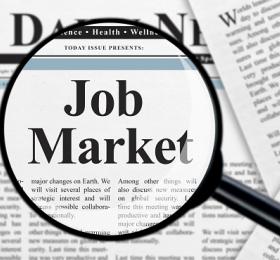
February 6, 2025
January marked a relatively cautious start to 2025 but not to fear in Laborland! December’s strong headline jobs print was revised even higher to the tune of 51,000 jobs. Though January saw payroll expansion come in at a modest 143,000, December’s final tally was 307,000, which means we are still adding ±200,000 new jobs/ month. Hourly earnings jumped by 0.5% MoM, and that would be a bit concerning in our view had we seen more upside to the inflation picture (broadly speaking). December job openings also moderated to 7.6M. There is a very healthy if not robust level of employment availability in the US economy, but labor demand is not so great as to cause immediate concern at the Federal Reserve. Equilibrium is the key! Meanwhile, January’s unemployment rate ticked lower to 4.0% with U6 hovering around 7.5%. Without question the labor market remains strong entering Q1 ‘25.
Moving right along in the new year, January’s US economic data releases came in rather mixed. Consumer confidence is struggling, but Americans keep on spending. Inflation expectations from both the NY Fed and University of Michigan are stubbornly higher than what the Fed would like to see. Demand for workers is strong but not too strong, and the near-term inflation picture is relatively benign, according to the latest batch of government data. This is not terribly surprising given what was Q4—worries about prospective tariff policy, inflationary pressures (real or imagined), affordability at the household level, borrowing costs for US consumers and corporations, and valuations for various assets (liquid and illiquid) dominated financial news outlets after November’s seismic shift on Capitol Hill. Uncertainty was the refrain to Wall Street’s Trump song.
Speaking of President Trump, we are beginning to see the first glimpse of policy now that “the Donald” has taken Sharpie to paper at the Resolute Desk-- for the second time. Tariffs do indeed seem a bargaining tool with Mexico and Canada receiving 30-day reprieves before 25% duties on goods took effect. Meanwhile, China bristled at its well-telegraphed 10% rate before pushing back rather cautiously with tariffs of its own, targeting energy and agriculture. Certainly fentanyl and immigration have been talking points of late with our neighbors to the north and south, but what about addressing affordability in America? Well… A primary objective for the Trump administration is to reduce the yield on the 10-yr UST. That’s a BIG market-based objective, and it is fairly obvious why the President and US Secretary of Treasury, Scott Bessent, would share that goal. The 10-yr Treasury is an incredibly important GLOBAL financial instrument. It will be very interesting to see HOW Trump and his team plan to achieve this objective. We will keep you posted as always.
This is an opportune moment to touch on Fed independence and bring into focus what transpired at the most recent FOMC meeting. It appears that Jay is safe in his job for now—there have not been any broadsides to date from the Oval Office. However, this is not to say that they can’t or won’t happen. Rates and markets are important to this administration, and the Fed is a rate-setting body. So, it’s likely only a matter of time before Jay Powell feels some pressure. As of this writing, everyone (i.e. Donald Trump, Jay Powell, and Scott Bessent) seem content with fed funds hovering effectively at 4.33%. We remain in the camp that this rate is not restrictive; Jay Powell stammered through his press conference arguing that the current rate is in fact restrictive. However, we would agree that longer term rates need to come down, as we mentioned a little over a year ago in the fall of ’23. At that time, inflation was beginning to abate, but it is still not quite behind us. “Normal inversion,” as we pointed out, may become a fact of financial life for investors, businesses, and consumers alike. The ramifications for markets cannot be overstated.
Pivoting to the health of corporate America, earnings season has gone off without a hitch. There have been a couple of high-profile misses (AMZN yesterday afternoon for instance), but the trajectory for profitability coming into ’25 is strong. We continue to expect double-digit earnings growth YoY, and our target for the S&P 500 is unchanged at 6800. Financial conditions appear to be rather conducive for transactions and when combined with a “deal friendly” political landscape, we would not rule out a spate of mergers and acquisitions in spite of the relatively high rates that we see flickering on our screens. Investment grade spreads are historically tight and guidance from corporate America seems strong for the present. More volatility is expected for stocks, but fundamentally large cap corporations are well positioned for the year ahead.
News Release: Bureau of Labor Statistics (The Employment Situation- January 2025)